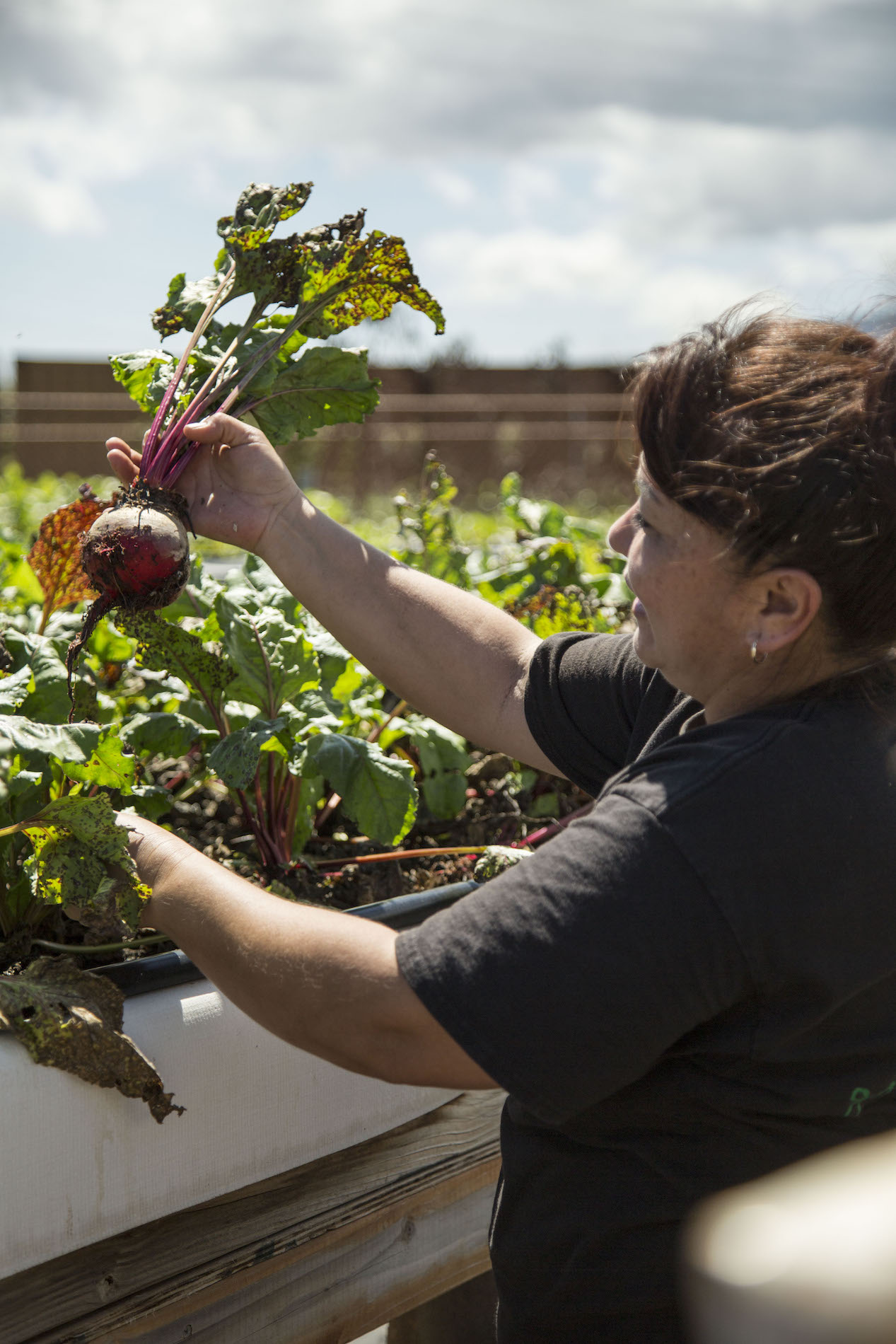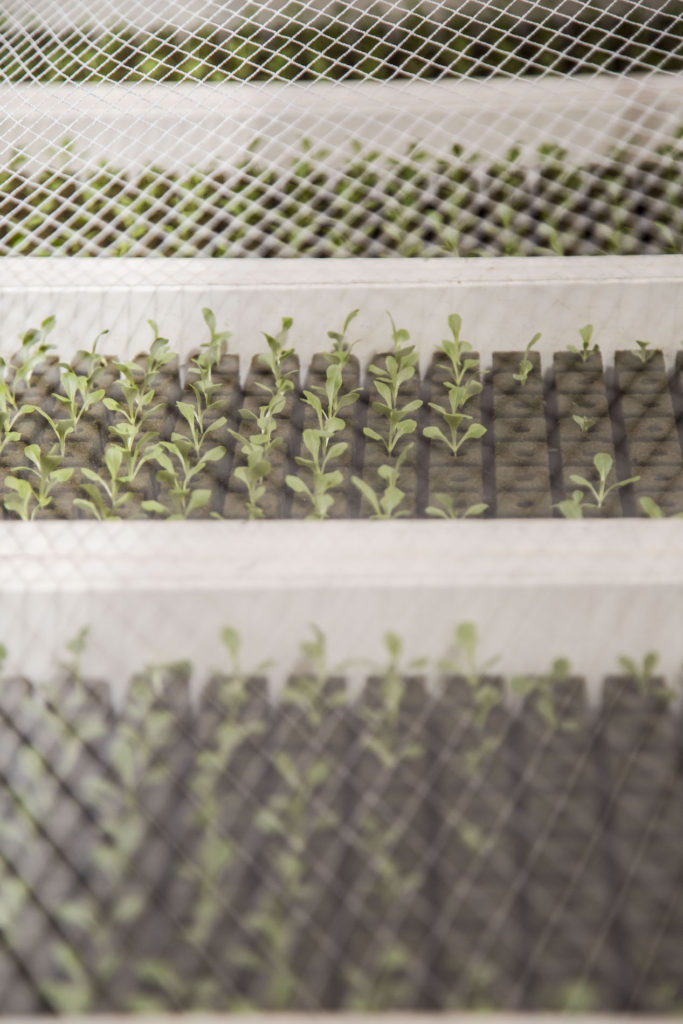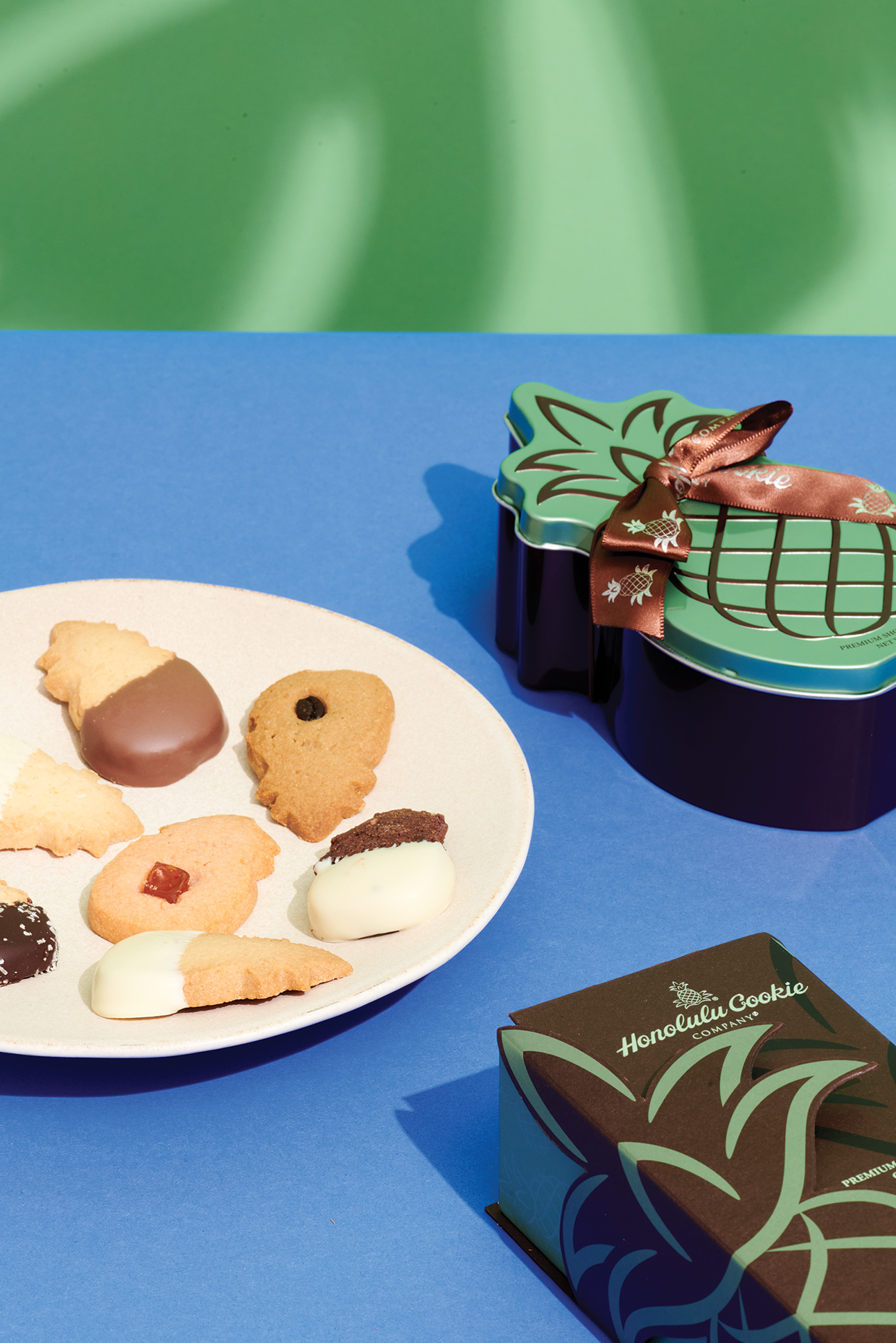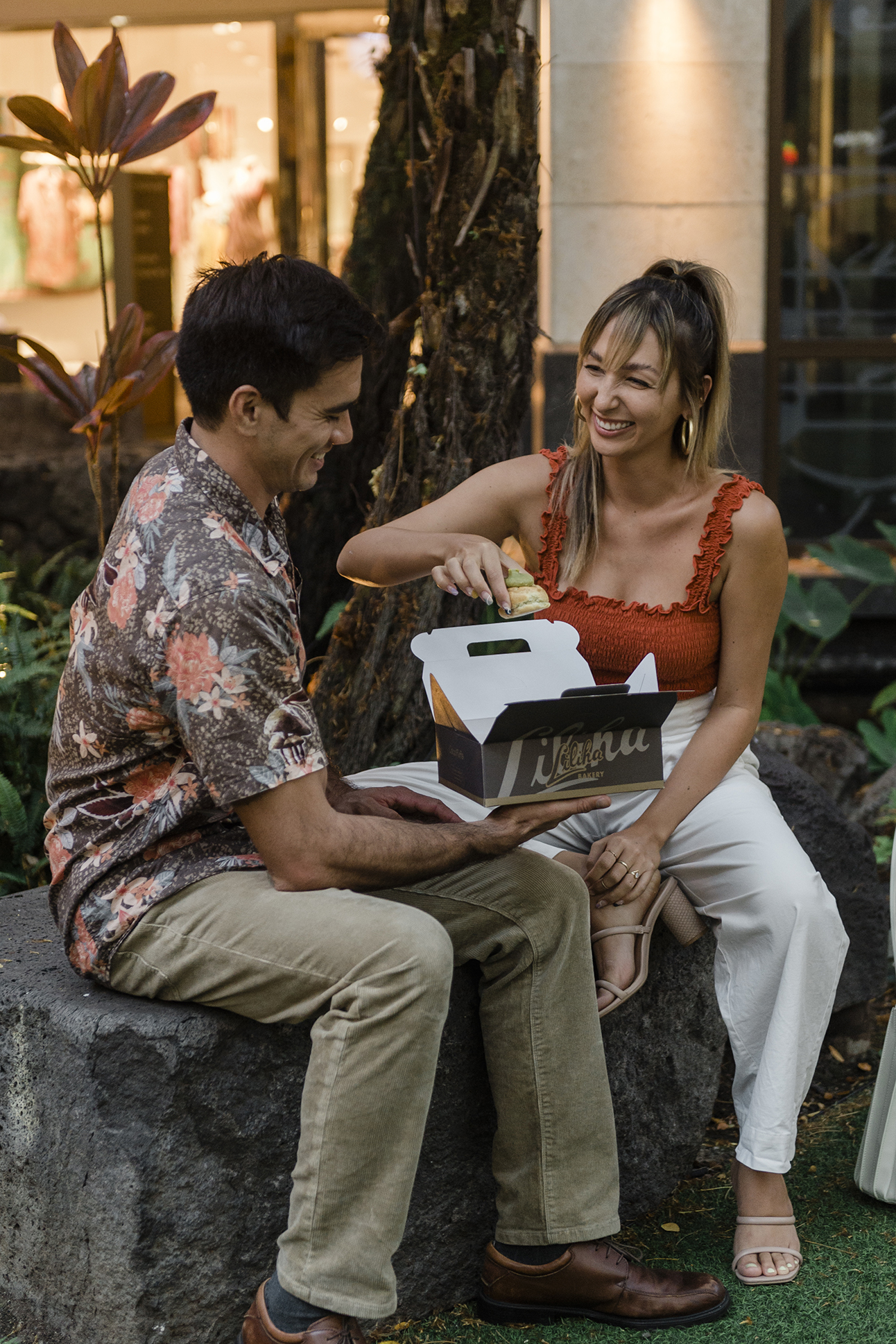

Pond to Table
A Mililani aquaponic farm brings its bounty to Waikīkī.
AL TOWN
IMAGES BY MARIE ERIEL HOBRO
“マリズ・ガーデンは、アクアポニックスと水耕の農園で、地元の生徒達に教育ツアーを提供している。複数のマーケットに農産物を提供する他、ワイキキのインターナショナルマーケットプレイス内のレストラン含め、オアフ島内多数のレストランに食材を供給している。
Burbling tanks containing catfish, swai, and tilapia dot the landscape, working in harmony with the many rows of plant tables that rest atop them. Curly kale, candy cane beets, carrots, and rainbow chard take water fortified with fish waste and bacteria up through their roots, filtering it before it is returned to the tanks. When the tanks are drained and scrubbed, the resulting nutrient-rich water is given to the mango and longan trees planted along the ditch. To the largest aquaponic farm in the state, water is precious.
Fred Lau purchased the 17.5 acres that make up Mari’s Gardens, formerly Watanabe’s Nursery, for his family-run landscaping business in 2007. But he had ideas to make it more than a home base for the company. Concerned about Hawai‘i’s food security, Lau wanted to provide locally grown produce for the people of Hawai‘i while making the least amount of impact possible on the ʻāina (land). A decade later, Mari’s Gardens is an aquaponic and hydroponic showcase farm that offers educational tours for neighborhood schoolchildren, provides produce for several markets, and supplies ingredients for a dozen O‘ahu restaurants, including a couple at Waikīkī’s International Market Place.


Aquaponics, as described by production manager Tanya Candido, “is the use of fish and plants growing together in balance, getting what they need from each other, to realize the entire cycle.” Hydroponics is the technique of growing seeds from water containing liquid vitamins and nutrients, rather than rooting them in soil. (At Mari’s Gardens, such crops grow in plant-friendly cubes atop water-conducting channels, and many are also part of the aquaponics operations.) Lau chose these methods because of their sustainability: They require less water than conventional farming and are free from any toxicity remaining in Mililani’s ground from sugar cane cultivation.

Mari’s Gardens also provides space for food events. Guest chefs from the Hawaiian Islands and abroad create dishes here with ingredients grown onsite. “[Lau] wanted to build something that bridged farm to table and brought the chef to the farm,” Candido says as she walks among the canopied outdoor seating. One tent is ready to host guests at transparent tabletops that rest on shallow troughs of circulating water. Underneath, fish flit by. A second space highlights the edible landscape by seating diners in front of long planter boxes growing herbs, edible flowers, and rows of crisp lettuce for which the farm is well known.
The farm’s vibrant produce is also available to chefs on O‘ahu via a third-party refrigerated service. Two restaurants in Waikīkī’s International Market Place take advantage of this fresh option. For dim sum, there’s the elegant Yauatcha tea house. Its crispy duck salad features a generous tuft of Mari’s microgreens atop fried lotus root, shaved shallot, tart pomelo, pomegranate, and pine nuts. For an extraordinary weekend brunch, try Herringbone Waikiki’s eggs Benedict. Pillows of sweet bread cradle braised Mari’s spinach, which is topped with poached eggs, thick bacon, hollandaise, and then the flair: succulent king crab, uni, a spoonful of caviar, and finally, an orchid. The flower grounds you, reminding you where you are. After a bite, you might require that.








